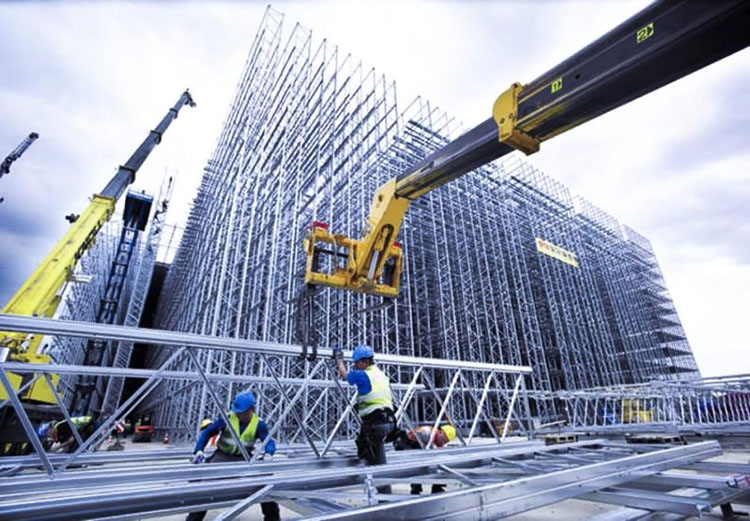Steel fixing plays a pivotal role in construction, as it ensures that reinforced steel bars, mesh, and other steel components are properly placed and secured to form a solid, durable structure. Steel fixing solutions have evolved significantly over the years, with innovative techniques and technologies enhancing the quality, speed, and efficiency of construction projects. In this article, we’ll explore the innovative steel fixing solutions that are revolutionizing the construction industry and how they can improve your upcoming projects.
Understanding Steel Fixing Steel fixing is the process of placing and securing steel reinforcement, also known as rebar, within concrete structures. The reinforcement is used to increase the strength of concrete, which is naturally strong in compression but weak in tension. The steel bars help to distribute and resist tension, ultimately ensuring the durability and stability of the structure.
Steel fixing involves several key processes, including cutting, bending, and tying steel bars, as well as ensuring that they are placed at the correct location within the structure. Proper steel fixing is essential to prevent structural failures and ensure the safety of the building or infrastructure.
Challenges in Steel Fixing and the Need for Innovation While steel fixing is a crucial part of construction, it can come with its own set of challenges. Traditional steel fixing methods often require manual labor, which can be time-consuming and prone to errors. Some of the common challenges include:
- Misalignment of Steel Bars: Incorrect placement of steel bars can lead to weak points in the structure, reducing its overall strength.
- Labor-Intensive Process: Traditional steel fixing is labor-intensive and requires skilled workers, which can increase project costs.
- Corrosion Risks: If steel bars are not properly protected or placed in areas prone to moisture, they may corrode over time, compromising the integrity of the structure.
- Health and Safety Concerns: Manual steel fixing involves working with sharp tools and heavy materials, which can pose safety risks to workers.
To address these issues, innovative steel fixing solutions have been developed that aim to improve accuracy, efficiency, and safety while reducing the overall cost of construction.
Technological Advancements in Steel Fixing With the advancement of technology, several innovations in steel fixing have emerged that offer significant benefits for construction projects. Here are some of the most notable advancements:
- Automated Steel Fixing Systems Automated steel fixing systems have revolutionized the industry by using machines and robots to perform repetitive tasks that were traditionally done by hand. These systems can bend, cut, and place steel bars with high precision and speed, reducing labor costs and minimizing the risk of errors. Automated systems also help reduce the physical strain on workers, enhancing safety on-site.
- Magnetic Fixing Technology Magnetic fixing technology uses powerful magnets to hold steel reinforcement in place, allowing workers to position and secure steel more efficiently. This system can greatly reduce the time spent on manual fixing, as magnets quickly align and hold steel bars, leaving workers to focus on other tasks.
- 3D Steel Reinforcement Models 3D modeling software allows engineers and steel fixers to visualize the reinforcement layout before beginning the fixing process. This helps to identify potential issues early on, such as clashes or misalignments, and ensures that the correct amount of steel is used in the right areas. By using these models, construction teams can plan the entire reinforcement process more effectively and avoid costly mistakes.
- Pre-Fabricated Steel Reinforcement Pre-fabricated steel reinforcement involves manufacturing steel components in a factory before they are transported to the construction site. This allows for faster installation, as the reinforcement is already cut and shaped to fit the specific requirements of the project. Pre-fabrication also reduces the amount of waste produced on-site and ensures consistent quality in the materials used.
- Advanced Welding Techniques Welding technology has also improved, with new techniques offering greater precision and strength. Automated welding machines and robotic arms can perform complex welding tasks, ensuring that the steel reinforcement is securely joined without human error. These advanced welding techniques are especially useful for large-scale projects where high-strength welds are required.
Benefits of Innovative Steel Fixing Solutions The adoption of innovative steel fixing solutions brings several key benefits to construction projects:
- Increased Accuracy and Quality Automated systems and advanced technology improve the precision of steel placement, reducing the likelihood of misalignment and ensuring that reinforcement is placed exactly where it is needed. This leads to stronger, more durable structures that can withstand the test of time.
- Reduced Labor Costs By automating many aspects of steel fixing, labor costs are significantly reduced. Workers are able to focus on higher-value tasks, while machines handle repetitive and time-consuming tasks like bending and tying rebar.
- Improved Safety Steel fixing can be dangerous work, with risks of injury from sharp tools, heavy materials, and tight spaces. Innovations like robotic arms and magnetic fixers reduce the amount of manual labor required, leading to a safer work environment.
- Faster Project Completion The efficiency gained through automated systems, pre-fabrication, and advanced welding technologies speeds up the construction process. Faster steel fixing means that construction timelines can be shortened, helping to deliver projects on schedule.
- Sustainability Many modern steel fixing solutions are designed with sustainability in mind. Pre-fabrication reduces material waste, while automated systems improve the accuracy of material usage. Additionally, steel can be recycled, making it an environmentally friendly option for construction.
Conclusion Innovative steel fixing solutions are transforming the construction industry, offering a range of benefits that can help contractors complete projects faster, safer, and more efficiently. By adopting advanced technologies like automated systems, magnetic fixing, and 3D modeling, construction teams can overcome the common challenges of steel fixing, reduce costs, and ensure the durability and strength of the final structure. As these solutions continue to evolve, they will undoubtedly play an even greater role in shaping the future of construction. Embrace innovation today and stay ahead of the curve with the latest steel fixing technologies.

